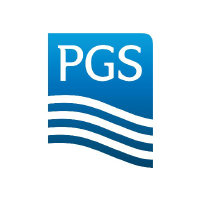
PGS ASA
OSE:PGS


| US |

|
Johnson & Johnson
NYSE:JNJ
|
Pharmaceuticals
|
| US |

|
Berkshire Hathaway Inc
NYSE:BRK.A
|
Financial Services
|
| US |

|
Bank of America Corp
NYSE:BAC
|
Banking
|
| US |

|
Mastercard Inc
NYSE:MA
|
Technology
|
| US |

|
UnitedHealth Group Inc
NYSE:UNH
|
Health Care
|
| US |

|
Exxon Mobil Corp
NYSE:XOM
|
Energy
|
| US |

|
Pfizer Inc
NYSE:PFE
|
Pharmaceuticals
|
| US |

|
Palantir Technologies Inc
NYSE:PLTR
|
Technology
|
| US |

|
Nike Inc
NYSE:NKE
|
Textiles, Apparel & Luxury Goods
|
| US |

|
Visa Inc
NYSE:V
|
Technology
|
| CN |

|
Alibaba Group Holding Ltd
NYSE:BABA
|
Retail
|
| US |

|
3M Co
NYSE:MMM
|
Industrial Conglomerates
|
| US |

|
JPMorgan Chase & Co
NYSE:JPM
|
Banking
|
| US |

|
Coca-Cola Co
NYSE:KO
|
Beverages
|
| US |

|
Walmart Inc
NYSE:WMT
|
Retail
|
| US |

|
Verizon Communications Inc
NYSE:VZ
|
Telecommunication
|
Utilize notes to systematically review your investment decisions. By reflecting on past outcomes, you can discern effective strategies and identify those that underperformed. This continuous feedback loop enables you to adapt and refine your approach, optimizing for future success.
Each note serves as a learning point, offering insights into your decision-making processes. Over time, you'll accumulate a personalized database of knowledge, enhancing your ability to make informed decisions quickly and effectively.
With a comprehensive record of your investment history at your fingertips, you can compare current opportunities against past experiences. This not only bolsters your confidence but also ensures that each decision is grounded in a well-documented rationale.
Do you really want to delete this note?
This action cannot be undone.

| 52 Week Range |
6.17
9.422
|
| Price Target |
|
We'll email you a reminder when the closing price reaches NOK.
Choose the stock you wish to monitor with a price alert.

|
Johnson & Johnson
NYSE:JNJ
|
US |

|
Berkshire Hathaway Inc
NYSE:BRK.A
|
US |

|
Bank of America Corp
NYSE:BAC
|
US |

|
Mastercard Inc
NYSE:MA
|
US |

|
UnitedHealth Group Inc
NYSE:UNH
|
US |

|
Exxon Mobil Corp
NYSE:XOM
|
US |

|
Pfizer Inc
NYSE:PFE
|
US |

|
Palantir Technologies Inc
NYSE:PLTR
|
US |

|
Nike Inc
NYSE:NKE
|
US |

|
Visa Inc
NYSE:V
|
US |

|
Alibaba Group Holding Ltd
NYSE:BABA
|
CN |

|
3M Co
NYSE:MMM
|
US |

|
JPMorgan Chase & Co
NYSE:JPM
|
US |

|
Coca-Cola Co
NYSE:KO
|
US |

|
Walmart Inc
NYSE:WMT
|
US |

|
Verizon Communications Inc
NYSE:VZ
|
US |
This alert will be permanently deleted.
 PGS ASA
PGS ASA
PGS ASA
Investor Relations
PGS ASA provides seismic images and 3D data describing and data processing services. The company is headquartered in Oslo, Oslo and currently employs 839 full-time employees. The company operates through three segments: MultiClient, Marine Contract and External Imaging. Multiclient provides a data library that contains advanced images of the subsurface that oil and gas companies use to explore for hydrocarbons. The MultiClient library consists of seismic data surveys which are licensed to customers on a non-exclusive basis. Marine Contract performs seismic services under contract in accordance with customer specifications. External Imaging activities are directed towards supplying services to a wide range of exploration and production companies. Imaging services comprise proprietary GeoStreamer-based imaging technology, as well as reservoir characterization and 4D (four-dimensional) oriented processing solutions. The firm operates globally.

PGS ASA provides seismic images and 3D data describing and data processing services. The company is headquartered in Oslo, Oslo and currently employs 839 full-time employees. The company operates through three segments: MultiClient, Marine Contract and External Imaging. Multiclient provides a data library that contains advanced images of the subsurface that oil and gas companies use to explore for hydrocarbons. The MultiClient library consists of seismic data surveys which are licensed to customers on a non-exclusive basis. Marine Contract performs seismic services under contract in accordance with customer specifications. External Imaging activities are directed towards supplying services to a wide range of exploration and production companies. Imaging services comprise proprietary GeoStreamer-based imaging technology, as well as reservoir characterization and 4D (four-dimensional) oriented processing solutions. The firm operates globally.





























 You don't have any saved screeners yet
You don't have any saved screeners yet
